26 - 30 September 2022
Asteroid deflection, power generation, debris removal; where humanity unites
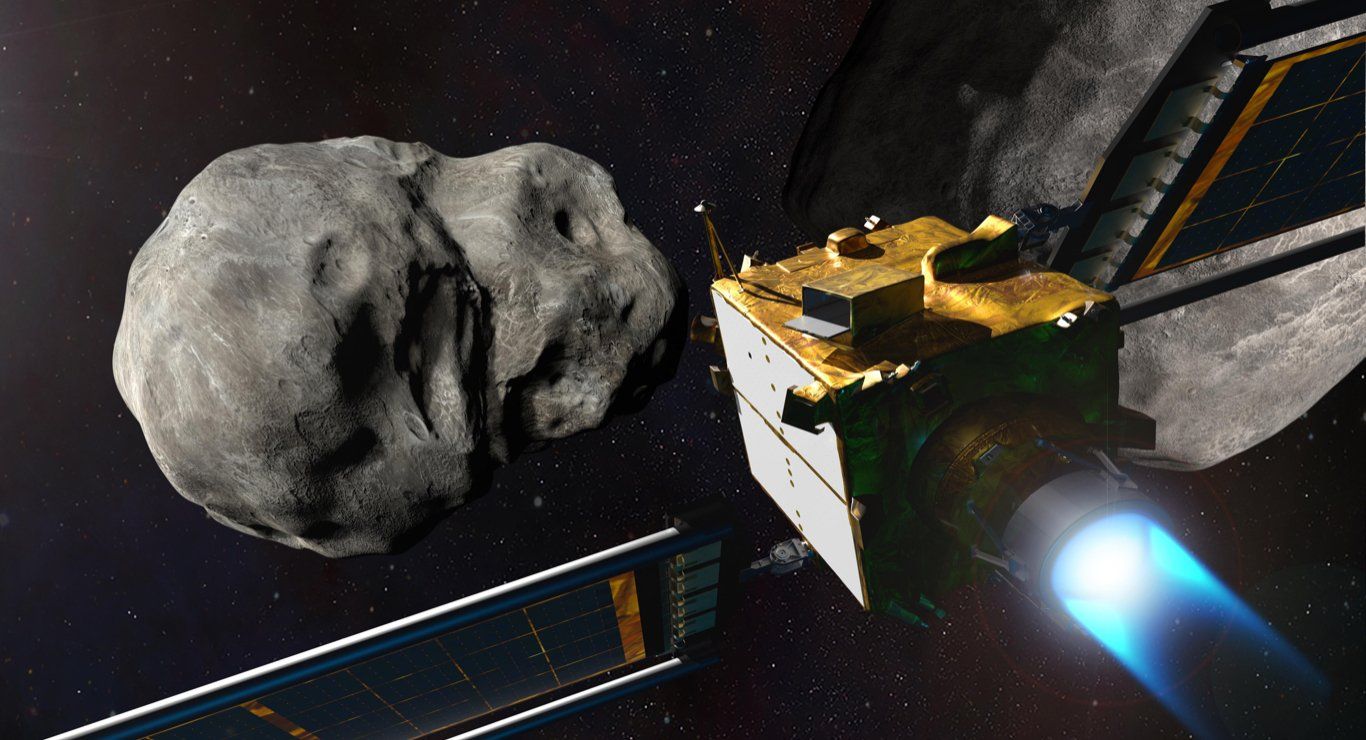
NASA's DART probe successfully impacted with an asteroid (Image: NASA)
It was a momentous week for NASA and planetary defence as their DART probe successfully impacted an asteroid in a demonstration to observe how Earth might be protected from such a threat in future. Furthermore, space nations and the commercial sector are continuing with their efforts in debris removal in orbit, and a deeper efforts are being made in the quest for space based power generation.
Following on from last week and the International Aeronautical Congress (IAC), we can also see efforts to unite behind such causes, and new space nations opening their doors for business. However, geopolitical tensions, the energy crisis and supply shortages still continue impact relations, and Russia continues to be isolated after South Korea have announced they will cancel launches using Russian rockets due to sanctions. Whilst this division continues to grow, could adversaries still work together in space in order to benefit humanity and the planet?
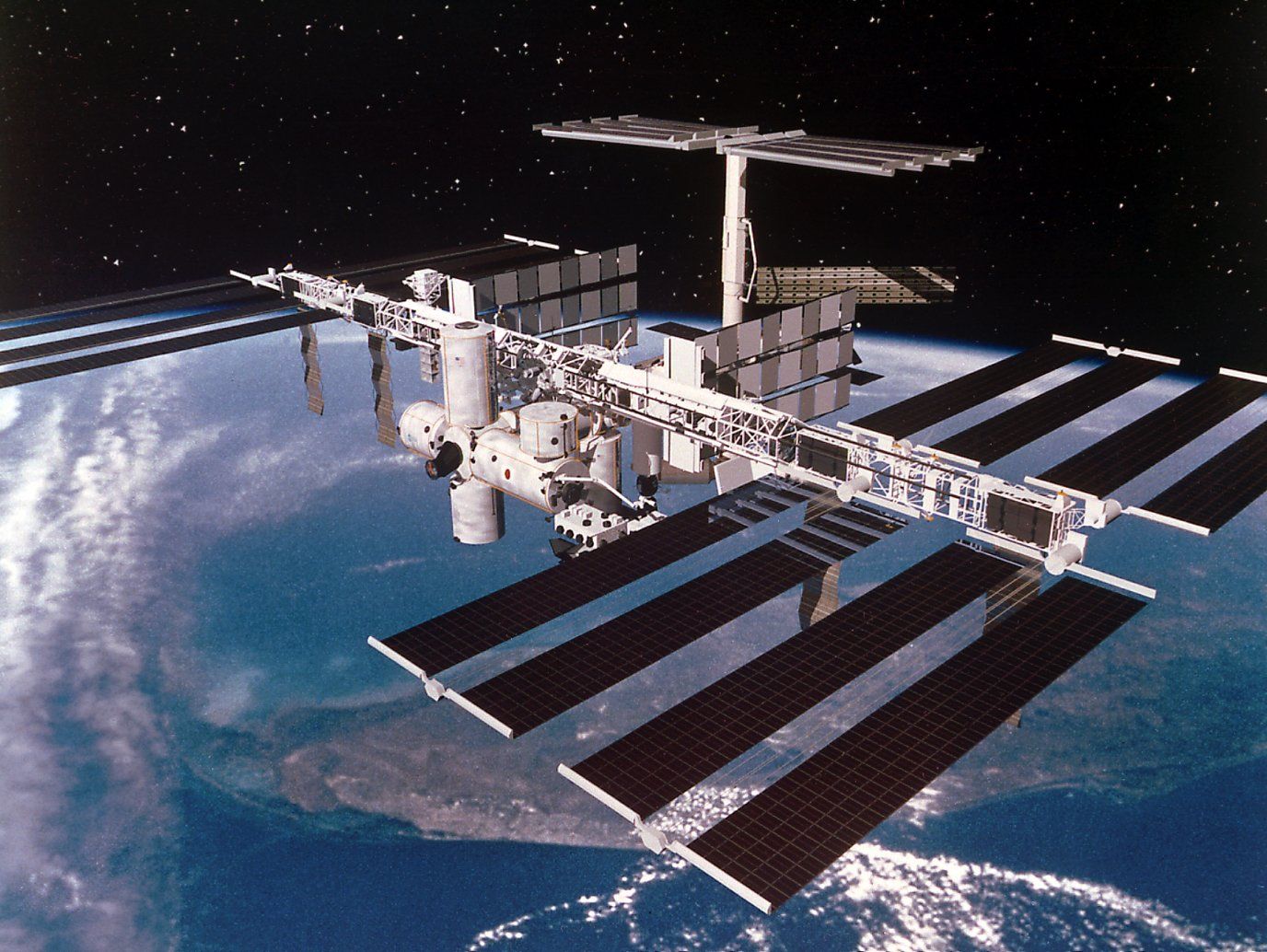
China looking for partners on their own station, similar to ISS (Image: Unsplash)
Division still apparent, but new space strives to unite
In the wake of the IAC, a host of new partnerships were announced, in a particular boost for the private sector. That drive to work together seems to be continuing, whether through innovative partnerships, or scientific research. Whilst NASA’s Artemis-1 mission faces yet more delays, caused by hurricane weather conditions, new partnerships in the space sector is spurring more success.
We’ve read much about India and their ambitions in the space sector over the past months, and this week ISRO chief, S. Somanath, reflected upon this by stating that the world is seeing India as an inspirational place in the space sector. There’s no doubt that India have, and will, achieve great things in space, especially considering the recent opening up of it’s private sector. India could well be the place where exciting new partnerships are built, whether through public or private channels.
Africa and Europe will also increase their cooperation in space, through the GMES program. The Global Monitoring for the Environment and Security for Africa (GMES and Africa) initiative will move into phase-2, and aims to increase cooperation on space science. We also know that China have long-term plans with African nations, within and outside of the space sector, and so could this be another place where constructive partnerships are formed?
Axiom have also announced new partnerships with Saudi Arabia, and will work with them to fly two astronauts to space. This comes at the same time Axiom already announced new partnerships with Canada and Türkiye, and will also play a key role in the Artemis missions by designing their new space suits.
China are also looking for new partners for their moon and deep space exploration programmes. Speaking at the IAC, they interestingly didn’t make specific mention of their main ally, Russia. The UAE have already announced that they will send their Rashid rover on a Chang’e mission, and a host of other opportunities were presented, including near-Earth asteroid sampling and a Mars sample return mission. We could hope that this may present opportunities to build new, positive alliances in space, or even the chance for bridges to be built between the US and China. We eagerly await more news.
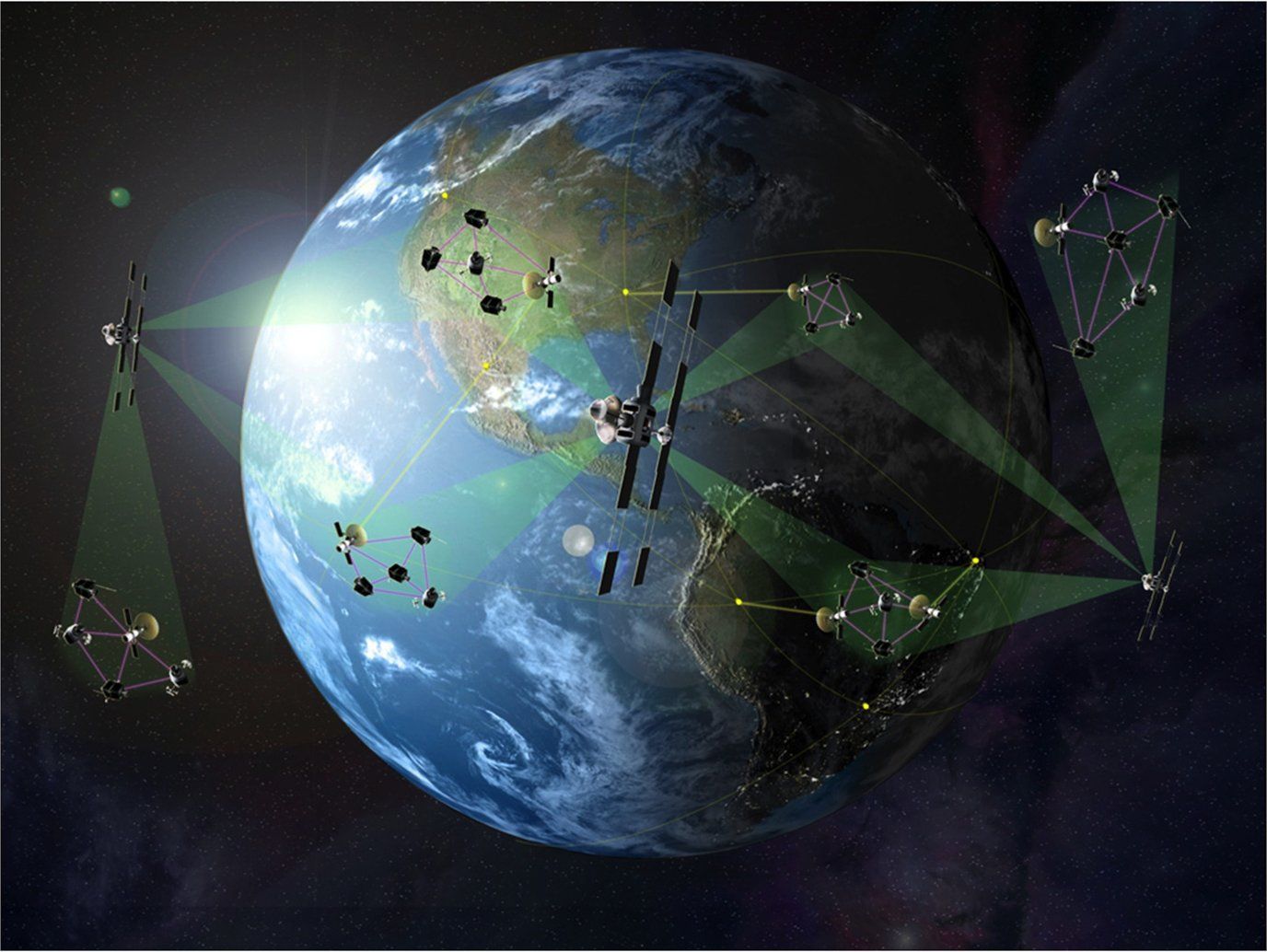
Managing debris will be vital for safe use of LEO (Image: Pixabay)
Space unity for the benefit of humankind and the planet
Unity in space may not be an easy thing to achieve, especially as new commercial interests arise, and Earthly conflicts creep into the sector. However, a few key areas may represent an opportunity to overcome these conflicts, and work together for the greater good. Space-based power generation could answer our energy needs, debris removal will ensure a sustainable and clean future, and asteroid deflection could save our species.
An ESA official has stated that collecting energy in space and transmitting it to Earth for terrestrial use could be competitive with nuclear power on an economic basis. Collecting solar energy in space and beaming it back to Earth is not a new idea, and leaders have taken a renewed interest recently. The ESA Solaris programme would look to achieve this. Furthermore, New Zealand startup Emrod have demonstrated their technology which could achieve this, successfully transmitting power over 36m. Whilst there are challenges to overcome, these could be exciting developments as nations strive to answer energy needs and reach carbon-zero emissions.
Sustainability remains to a key area of innovation, and could be vital in order to maintain public relations and prove that space could provide solutions for many of humankind’s problems. The UK continues to strive for leadership in debris removal and the government has recently awarded ClearSpace and leading debris removal company Astroscale £4m to “to design missions to remove existing pieces of space debris”, with the latter also opening a new site in the UK to build satellite debris removal servicer satellites. Unity in debris removal will be vital for safety and sustainability, especially considering the increasing number of satellites constellations in orbit.
Most notably this week, NASA successfully sent their DART probe to collide with small asteroid Dimorphos, in order to observe how technology can be used to push a threatening object off-course, should it be headed towards Earth. The mission represents opportunities for International cooperation, going above political disputes and working together in order to protect the planet, with the ESA playing a key role in the mission by capturing the light after the impact in order to observe DART’s effects. Such importance is attached to this mission that Chinese space watchers even wished NASA the best of luck, with Pang Zhihao, a senior space expert based in Beijing, saying "Mankind have been forming multiple kinds of planetary defense strategy, but it is a first experiment to be put in practice." Despite all their differences, perhaps these are the areas where nations and companies can unite, for the benefit of us all.
External Links
This Week
*News articles posted here are not property of ANASDA GmbH and belong to their respected owners. Postings here are external links only.
Our future in space
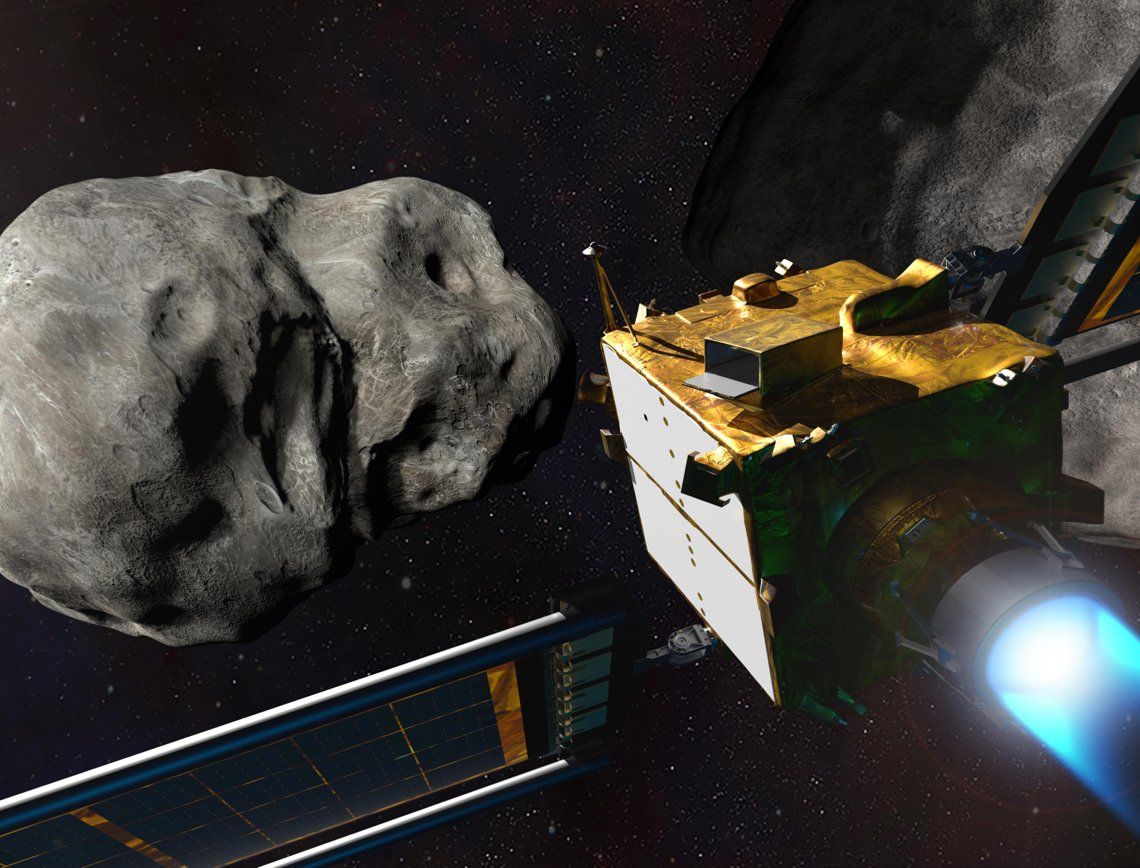
NASA's DART probe successfully impacted with an asteroid (Image: NASA)
26 - 30 September 2022
Asteroid deflection, power generation, debris removal; where humanity unites
It was a momentous week for NASA and planetary defence as their DART probe successfully impacted an asteroid in a demonstration to observe how Earth might be protected from such a threat in future. Furthermore, space nations and the commercial sector are continuing with their efforts in debris removal in orbit, and a deeper efforts are being made in the quest for space based power generation.
Following on from last week and the International Aeronautical Congress (IAC), we can also see efforts to unite behind such causes, and new space nations opening their doors for business. However, geopolitical tensions, the energy crisis and supply shortages still continue impact relations, and Russia continues to be isolated after South Korea have announced they will cancel launches using Russian rockets due to sanctions. Whilst this division continues to grow, could adversaries still work together in space in order to benefit humanity and the planet?
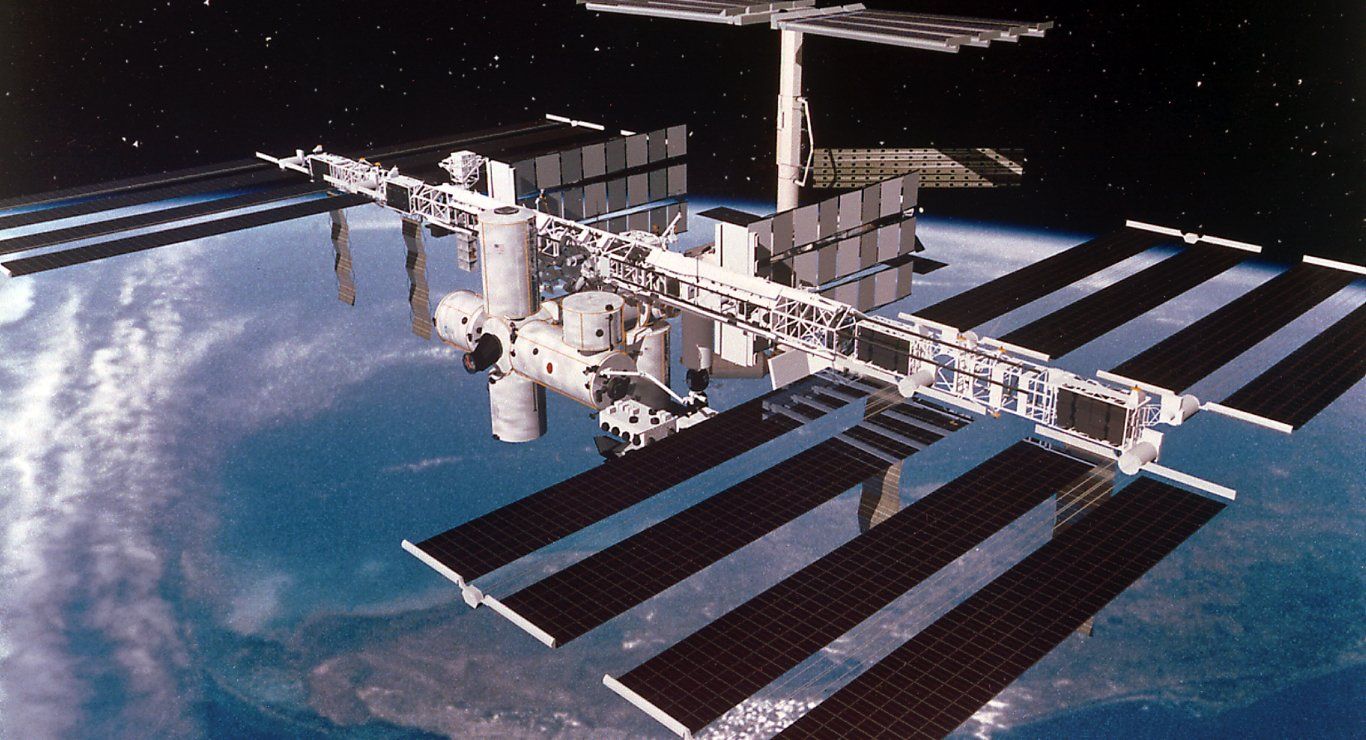
China looking for partners on their own station, similar to ISS (Image: Unsplash)
Division still apparent, but new space strives to unite
In the wake of the IAC, a host of new partnerships were announced, in a particular boost for the private sector. That drive to work together seems to be continuing, whether through innovative partnerships, or scientific research. Whilst NASA’s Artemis-1 mission faces yet more delays, caused by hurricane weather conditions, new partnerships in the space sector is spurring more success.
We’ve read much about India and their ambitions in the space sector over the past months, and this week ISRO chief, S. Somanath, reflected upon this by stating that the world is seeing India as an inspirational place in the space sector. There’s no doubt that India have, and will, achieve great things in space, especially considering the recent opening up of it’s private sector. India could well be the place where exciting new partnerships are built, whether through public or private channels.
Africa and Europe will also increase their cooperation in space, through the GMES program. The Global Monitoring for the Environment and Security for Africa (GMES and Africa) initiative will move into phase-2, and aims to increase cooperation on space science. We also know that China have long-term plans with African nations, within and outside of the space sector, and so could this be another place where constructive partnerships are formed?
Axiom have also announced new partnerships with Saudi Arabia, and will work with them to fly two astronauts to space. This comes at the same time Axiom already announced new partnerships with Canada and Türkiye, and will also play a key role in the Artemis missions by designing their new space suits.
China are also looking for new partners for their moon and deep space exploration programmes. Speaking at the IAC, they interestingly didn’t make specific mention of their main ally, Russia. The UAE have already announced that they will send their Rashid rover on a Chang’e mission, and a host of other opportunities were presented, including near-Earth asteroid sampling and a Mars sample return mission. We could hope that this may present opportunities to build new, positive alliances in space, or even the chance for bridges to be built between the US and China. We eagerly await more news.
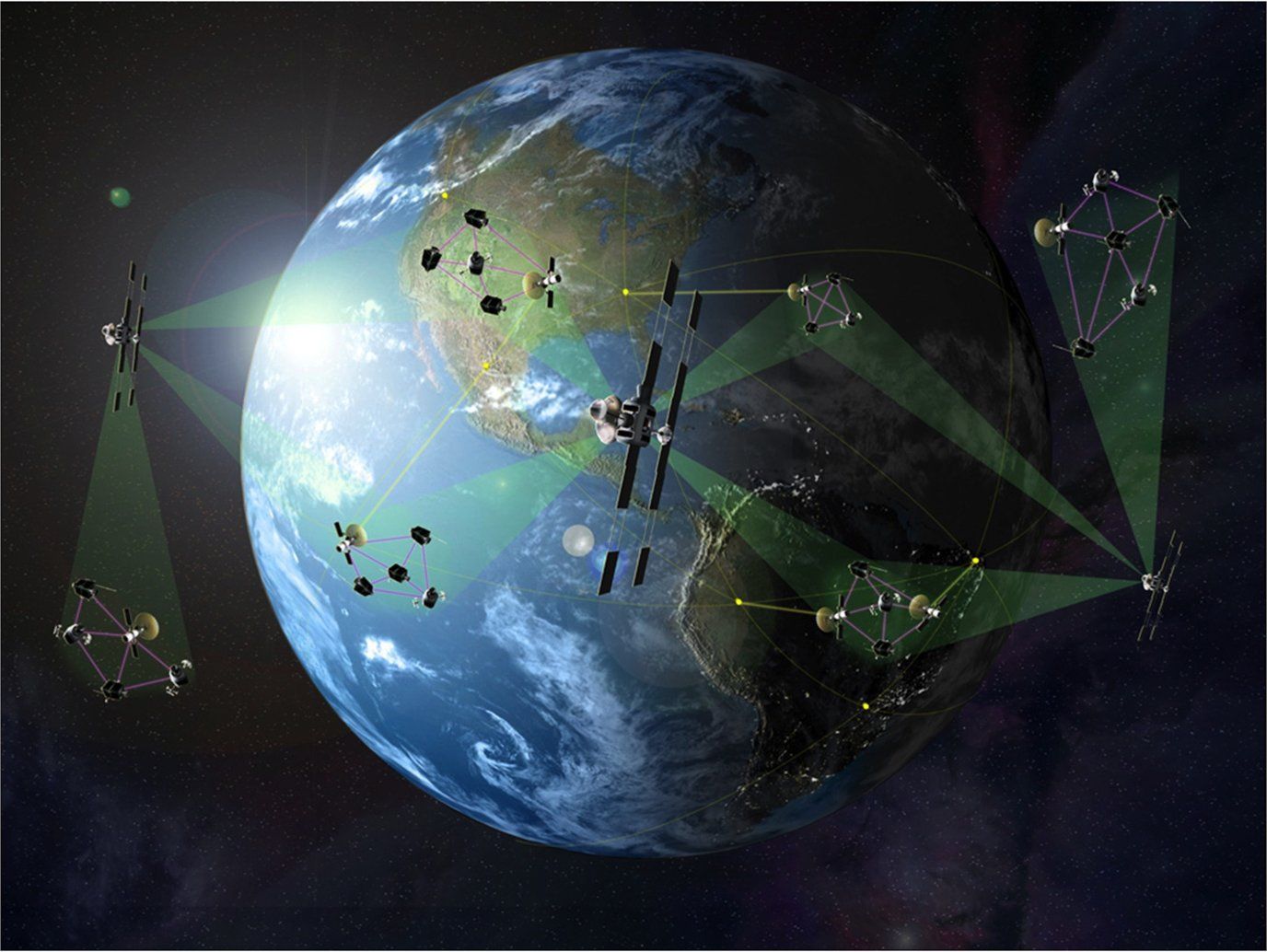
Managing debris will be vital for safe use of LEO (Image: Pixabay)
Space unity for the benefit of humankind and the planet
Unity in space may not be an easy thing to achieve, especially as new commercial interests arise, and Earthly conflicts creep into the sector. However, a few key areas may represent an opportunity to overcome these conflicts, and work together for the greater good. Space-based power generation could answer our energy needs, debris removal will ensure a sustainable and clean future, and asteroid deflection could save our species.
An ESA official has stated that collecting energy in space and transmitting it to Earth for terrestrial use could be competitive with nuclear power on an economic basis. Collecting solar energy in space and beaming it back to Earth is not a new idea, and leaders have taken a renewed interest recently. The ESA Solaris programme would look to achieve this. Furthermore, New Zealand startup Emrod have demonstrated their technology which could achieve this, successfully transmitting power over 36m. Whilst there are challenges to overcome, these could be exciting developments as nations strive to answer energy needs and reach carbon-zero emissions.
Sustainability remains to a key area of innovation, and could be vital in order to maintain public relations and prove that space could provide solutions to many of humankind’s problems. The UK continues to strive for leadership in debris removal and the government has recently awarded ClearSpace and leading debris removal company Astroscale £4m to “to design missions to remove existing pieces of space debris”, with the latter also opening a new site in the UK to build satellite debris removal servicer satellites. Unity in debris removal will be vital for safety and sustainability, especially considering the increasing number of satellites constellations in orbit.
Most notably this week, NASA successfully sent their DART probe to collide with small asteroid Dimorphos, in order to observe how technology can be used to push a threatening object off-course, should it be headed towards Earth. The mission represents opportunities for International cooperation, going above political disputes and working together in order to protect the planet, with the ESA playing a key role in the mission by capturing the light after the impact in order to observe DART’s effects. Such importance is attached to this mission that Chinese space watchers even wished NASA the best of luck, with Pang Zhihao, a senior space expert based in Beijing, saying "Mankind have been forming multiple kinds of planetary defense strategy, but it is a first experiment to be put in practice." Despite all their differences, perhaps these are the areas where nations and can unite, for the benefit of us all.
Share this article
External Links
This Week
*News articles posted here are not property of ANASDA GmbH and belong to their respected owners. Postings here are external links only.
26 - 30 Sept 2022
Asteroid deflection, power generation, debris removal; where humanity unites
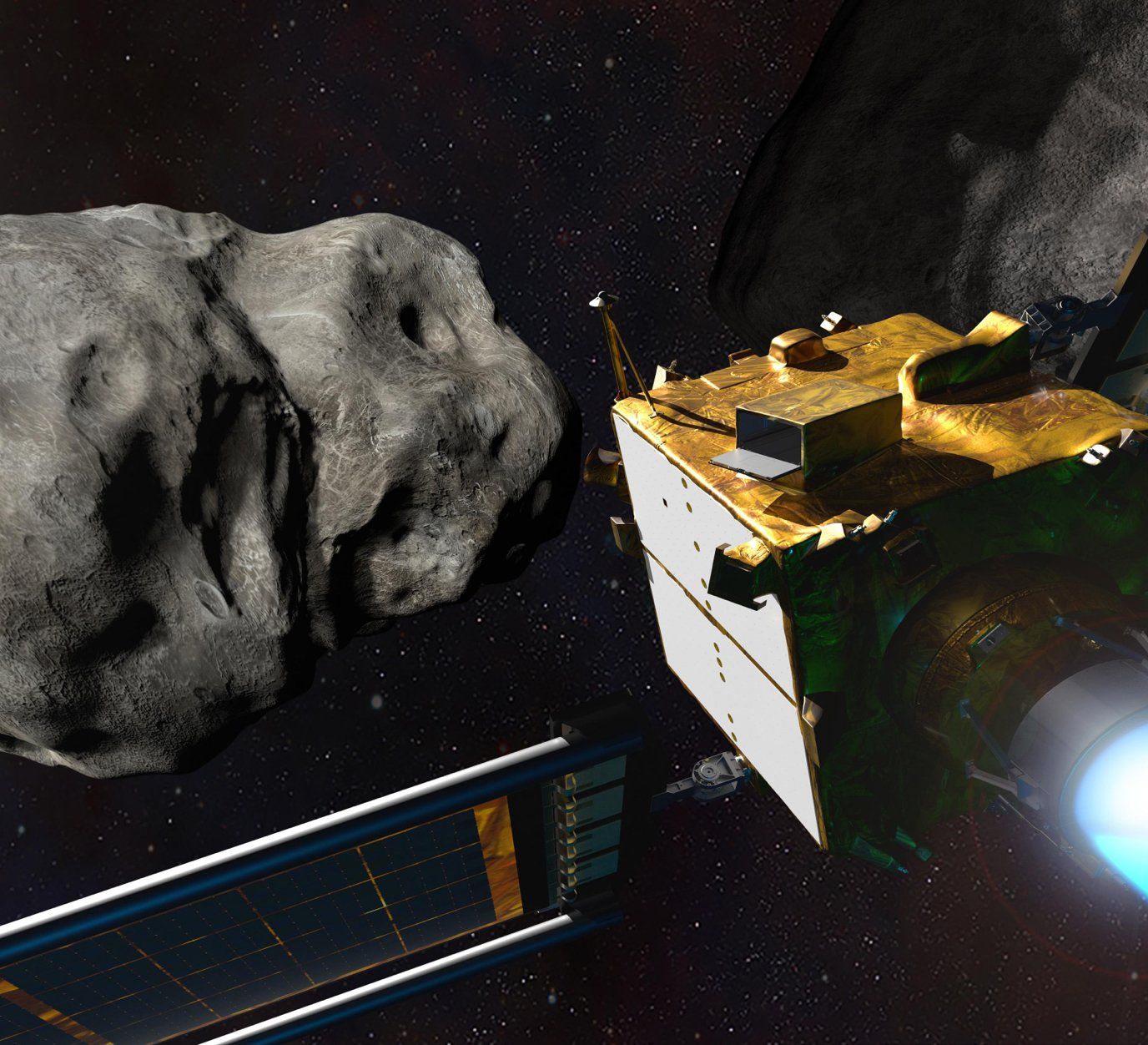
NASA's DART probe successfully impacted with an asteroid (Image: NASA)
It was a momentous week for NASA and planetary defence as their DART probe successfully impacted an asteroid in a demonstration to observe how Earth might be protected from such a threat in future. Furthermore, space nations and the commercial sector are continuing with their efforts in debris removal in orbit, and a deeper efforts are being made in the quest for space based power generation.
Following on from last week and the International Aeronautical Congress (IAC), we can also see efforts to unite behind such causes, and new space nations opening their doors for business. However, geopolitical tensions, the energy crisis and supply shortages still continue impact relations, and Russia continues to be isolated after South Korea have announced they will cancel launches using Russian rockets due to sanctions. Whilst this division continues to grow, could adversaries still work together in space in order to benefit humanity and the planet?
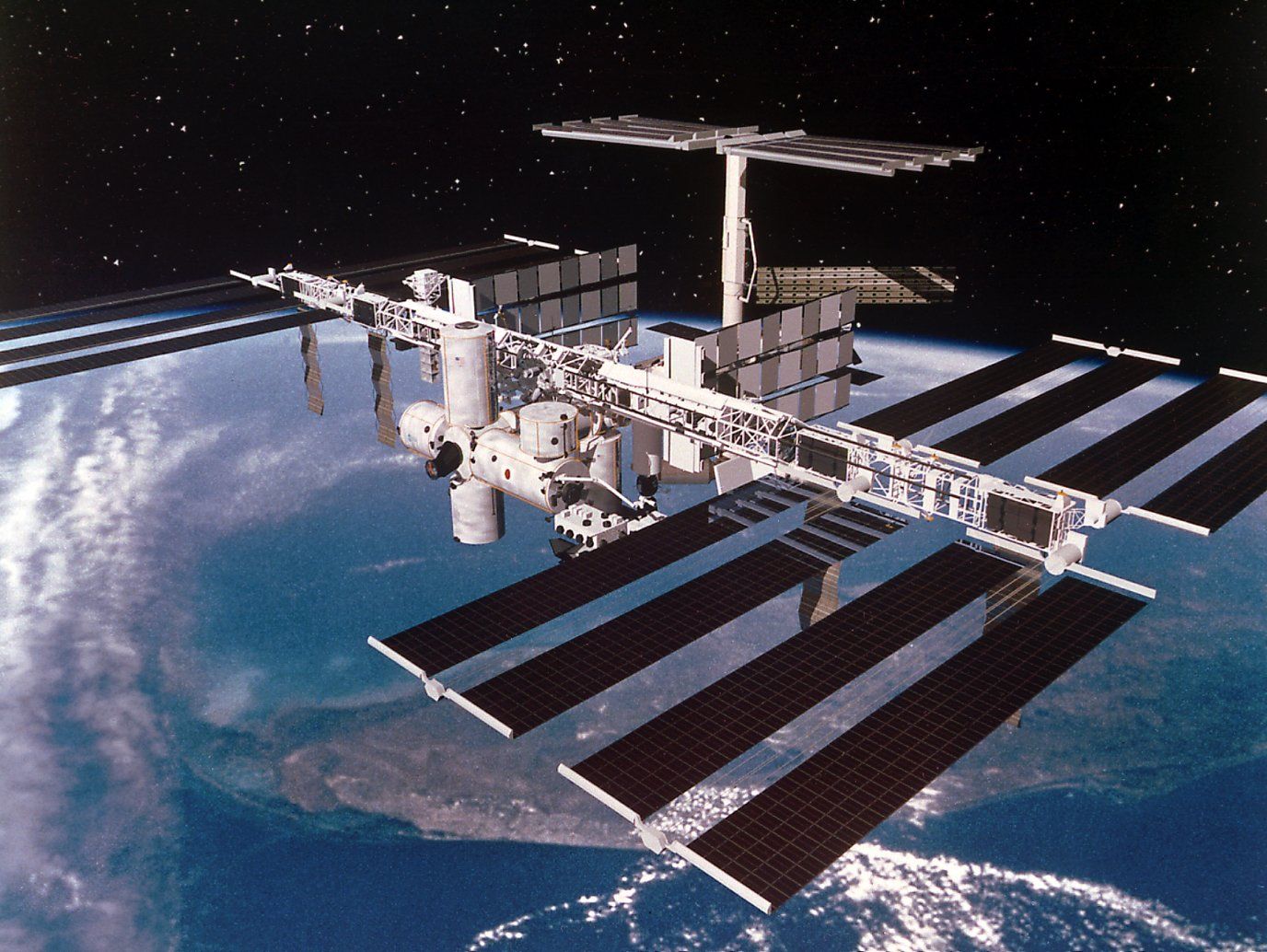
China looking for partners on their own station, similar to ISS (Image: Unsplash)
Division still apparent, but new space strives to unite
In the wake of the IAC, a host of new partnerships were announced, in a particular boost for the private sector. That drive to work together seems to be continuing, whether through innovative partnerships, or scientific research. Whilst NASA’s Artemis-1 mission faces yet more delays, caused by hurricane weather conditions, new partnerships in the space sector is spurring more success.
We’ve read much about India and their ambitions in the space sector over the past months, and this week ISRO chief, S. Somanath, reflected upon this by stating that the world is seeing India as an inspirational place in the space sector. There’s no doubt that India have, and will, achieve great things in space, especially considering the recent opening up of it’s private sector. India could well be the place where exciting new partnerships are built, whether through public or private channels.
Africa and Europe will also increase their cooperation in space, through the GMES program. Global Monitoring for the Environment and Security for Africa (GMES and Africa) initiative will move into phase-2, and aims to increase cooperation on space science. We also know that China have long-term plans with African nations, within and outside of the space sector, and so could this be another place where constructive partnerships are formed?
Axiom have also announced new partnerships with Saudi Arabia, and will work with them to fly two astronauts to space. This comes at the same time Axiom already announced new partnerships with Canada and Türkiye, and will also play a key role in the Artemis missions by designing their new space suits.
China are also looking for new partners for their moon and deep space exploration programmes. Speaking at the IAC, they interestingly didn’t make specific mention of their main ally, Russia. The UAE have already announced that they will send their Rashid rover on a Chang’e mission, and a host of other opportunities were presented, including near-Earth asteroid sampling and a Mars sample return mission. We could hope that this may present opportunities to build new, positive alliances in space, or even the chance for bridges to be built between the US and China. We eagerly await more news.

Managing debris will be vital for safe use of LEO (Image: Pixabay)
Space unity for the benefit of humankind and the planet
Unity in space may not be an easy thing to achieve, especially as new commercial interests arise, and Earthly conflicts creep into the sector. However, a few key areas may represent an opportunity to overcome these conflicts, and work together for the greater good. Space-based power generation could answer our energy needs, debris removal will ensure a sustainable and clean future, and asteroid deflection could save our species.
An ESA official has stated that collecting energy in space and transmitting it to Earth for terrestrial use could be competitive with nuclear power on an economic basis. Collecting solar energy in space and beaming it back to Earth is not a new idea, and leaders have taken a renewed interest recently. The ESA Solaris programme would look to achieve this. Furthermore, New Zealand startup Emrod have demonstrated their technology which could achieve this, successfully transmitting power over 36m. Whilst there are challenges to overcome, these could be exciting developments as nations strive to answer energy needs and reach carbon-zero emissions.
Sustainability remains to a key area of innovation, and could be vital in order to maintain public relations and prove that space could provide solutions to many of humankind’s problems. The UK continues to strive for leadership in debris removal and the government has recently awarded ClearSpace and leading debris removal company Astroscale £4m to “to design missions to remove existing pieces of space debris”, with the latter also opening a new site in the UK to build satellite debris removal servicer satellites. Unity in debris removal will be vital for safety and sustainability, especially considering the increasing number of satellites constellations in orbit.
Most notably this week, NASA successfully sent their DART probe to collide with small asteroid Dimorphos, in order to observe how technology can be used to push a threatening object off-course, should it be headed towards Earth. The mission represents opportunities for International cooperation, going above political disputes and working together in order to protect the planet, with the ESA playing a key role in the mission by capturing the light after the impact in order to observe DART’s effects. Such importance is attached to this mission that Chinese space watchers even wished NASA the best of luck, with Pang Zhihao, a senior space expert based in Beijing, saying "Mankind have been forming multiple kinds of planetary defense strategy, but it is a first experiment to be put in practice." Despite all their differences, perhaps these are the areas where nations and an unite, for the benefit of us all.
Share this article
External Links
This Week
*News articles posted here are not property of ANASDA GmbH and belong to their respected owners. Postings here are external links only.
















